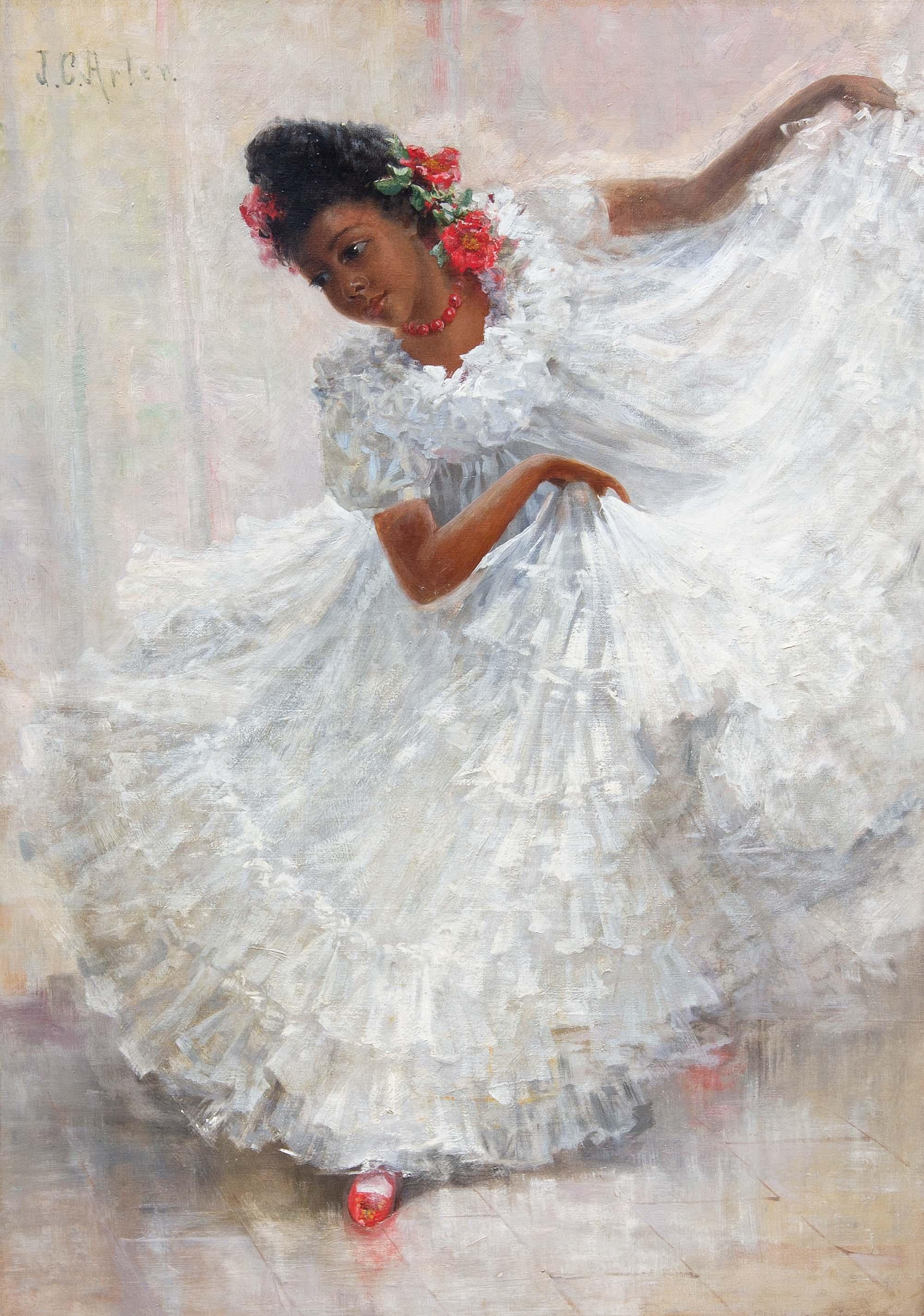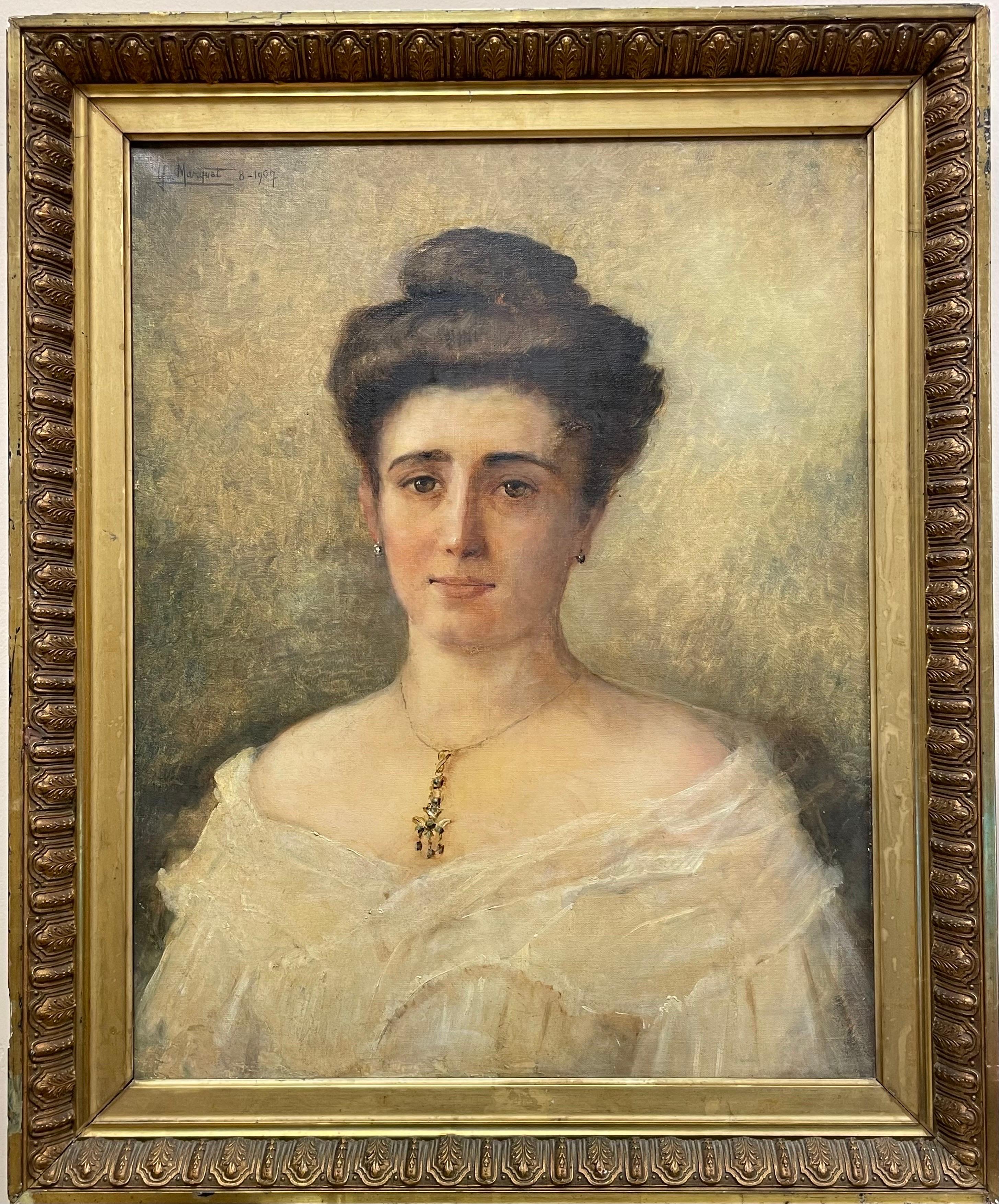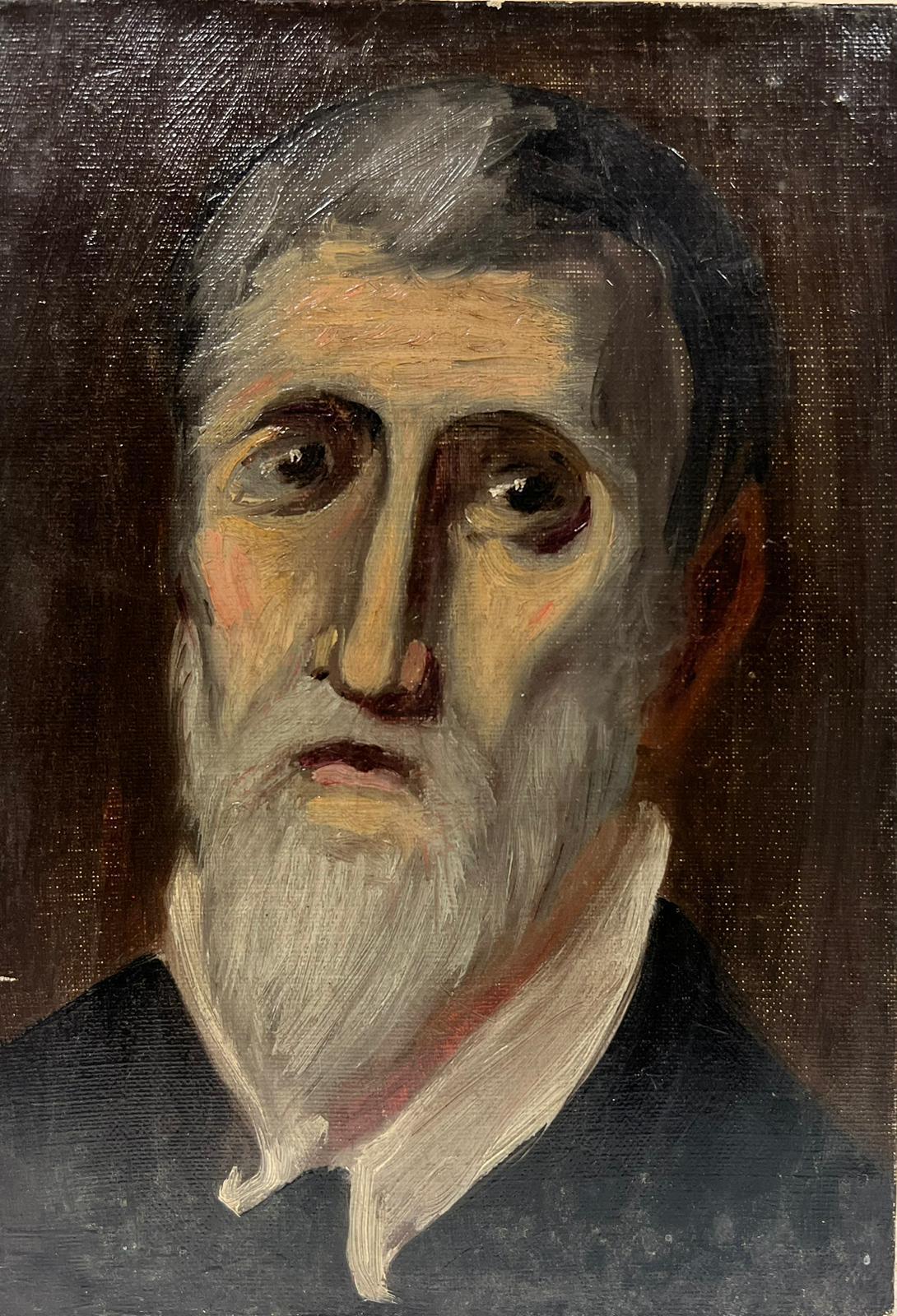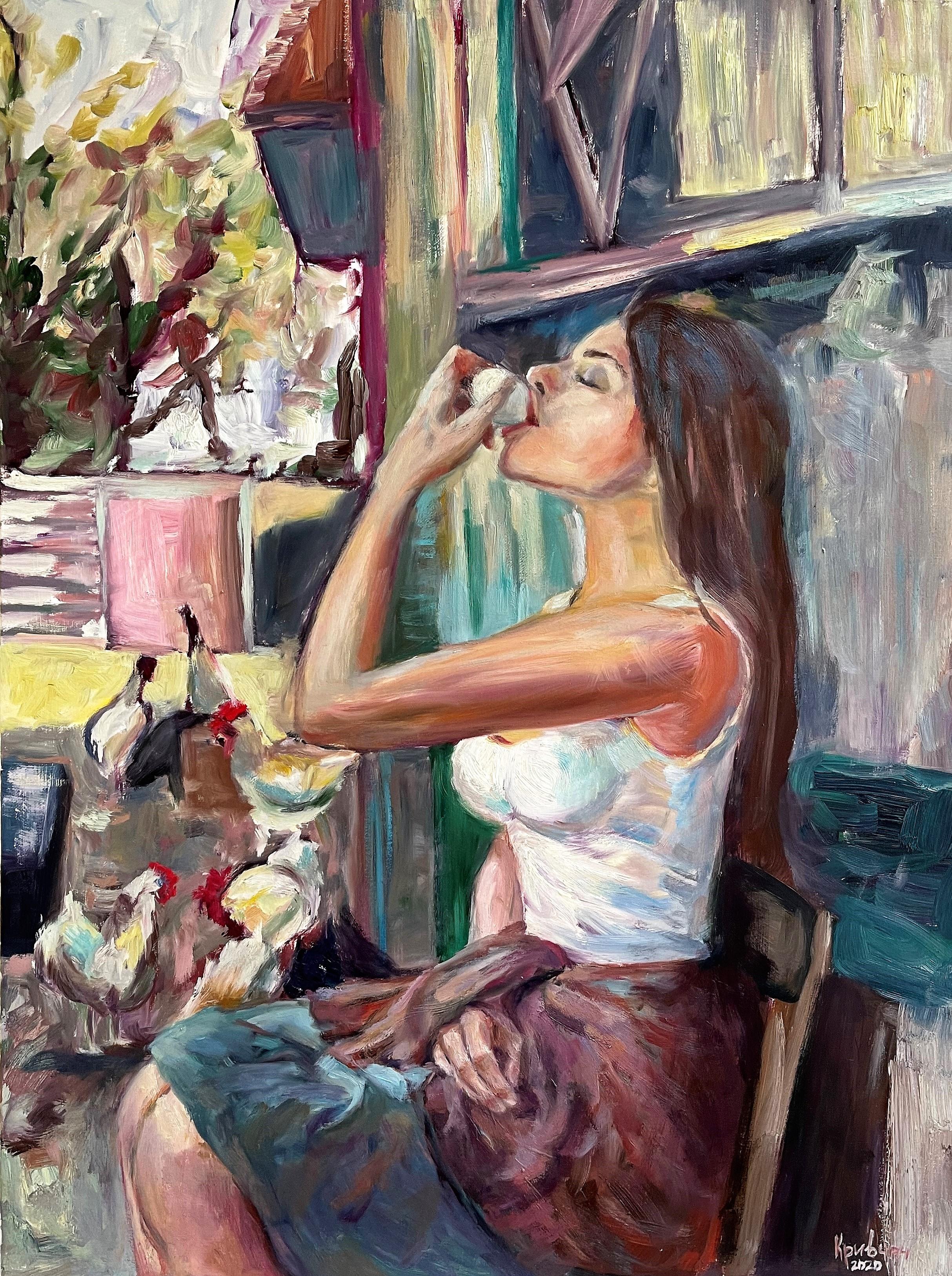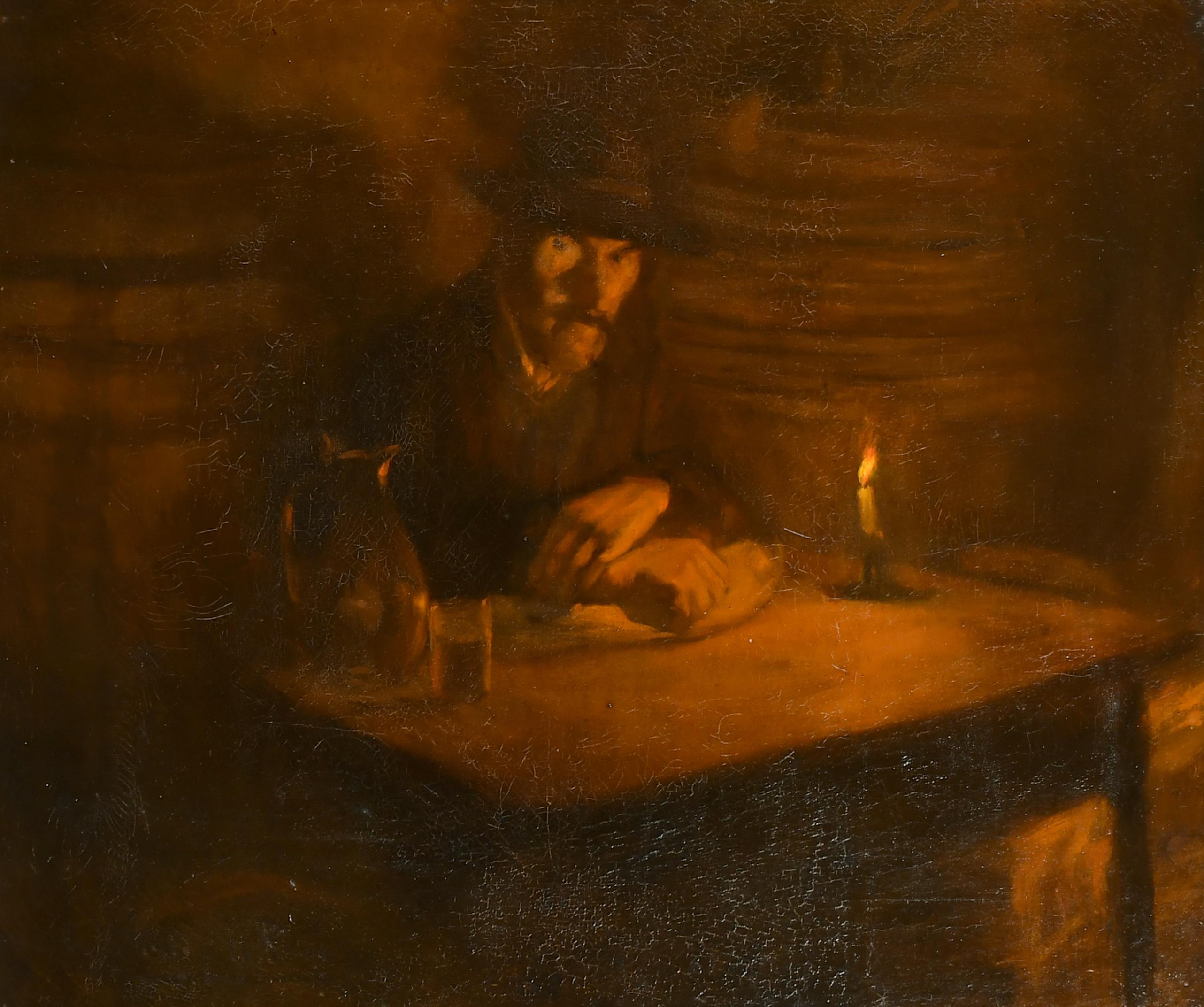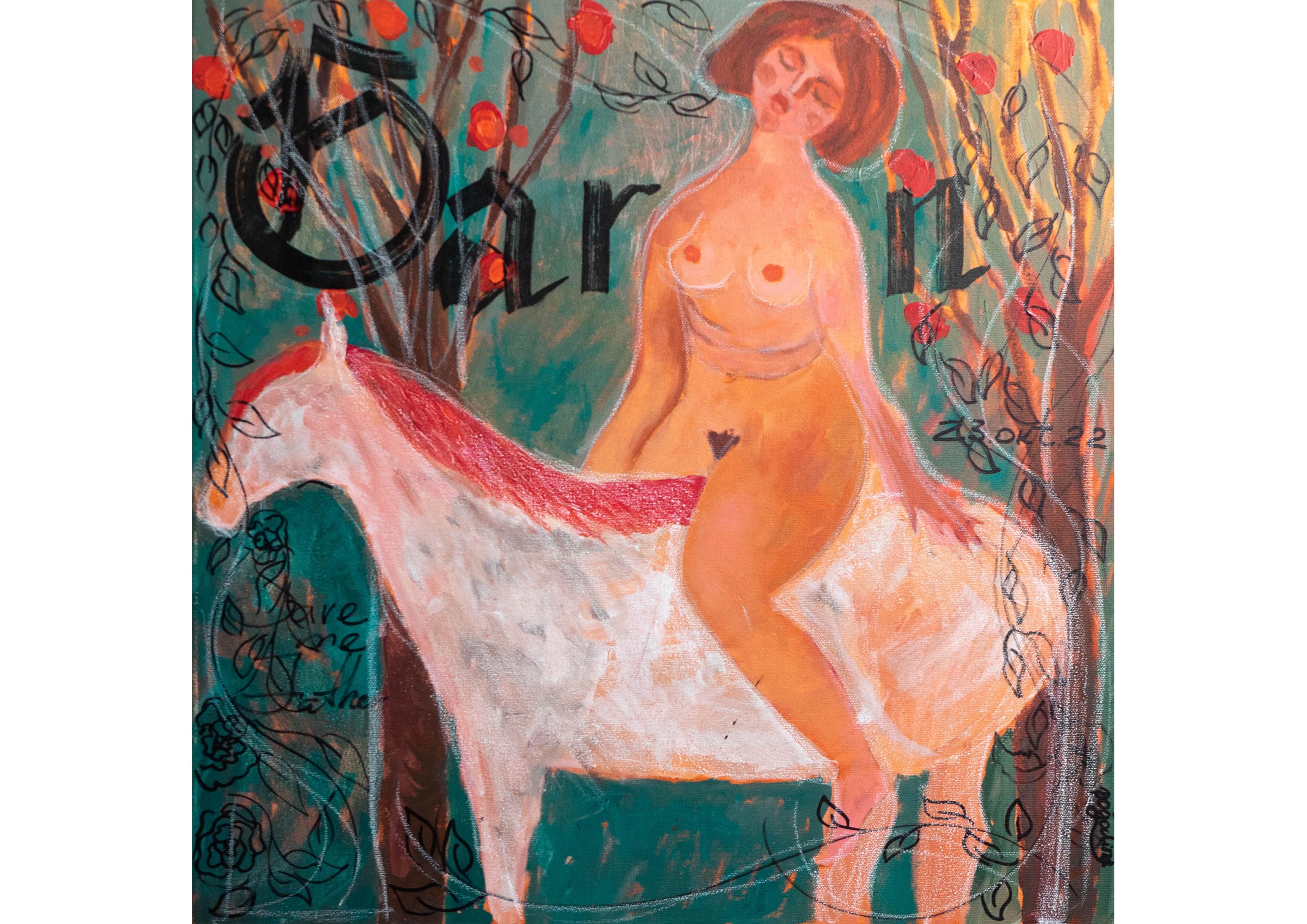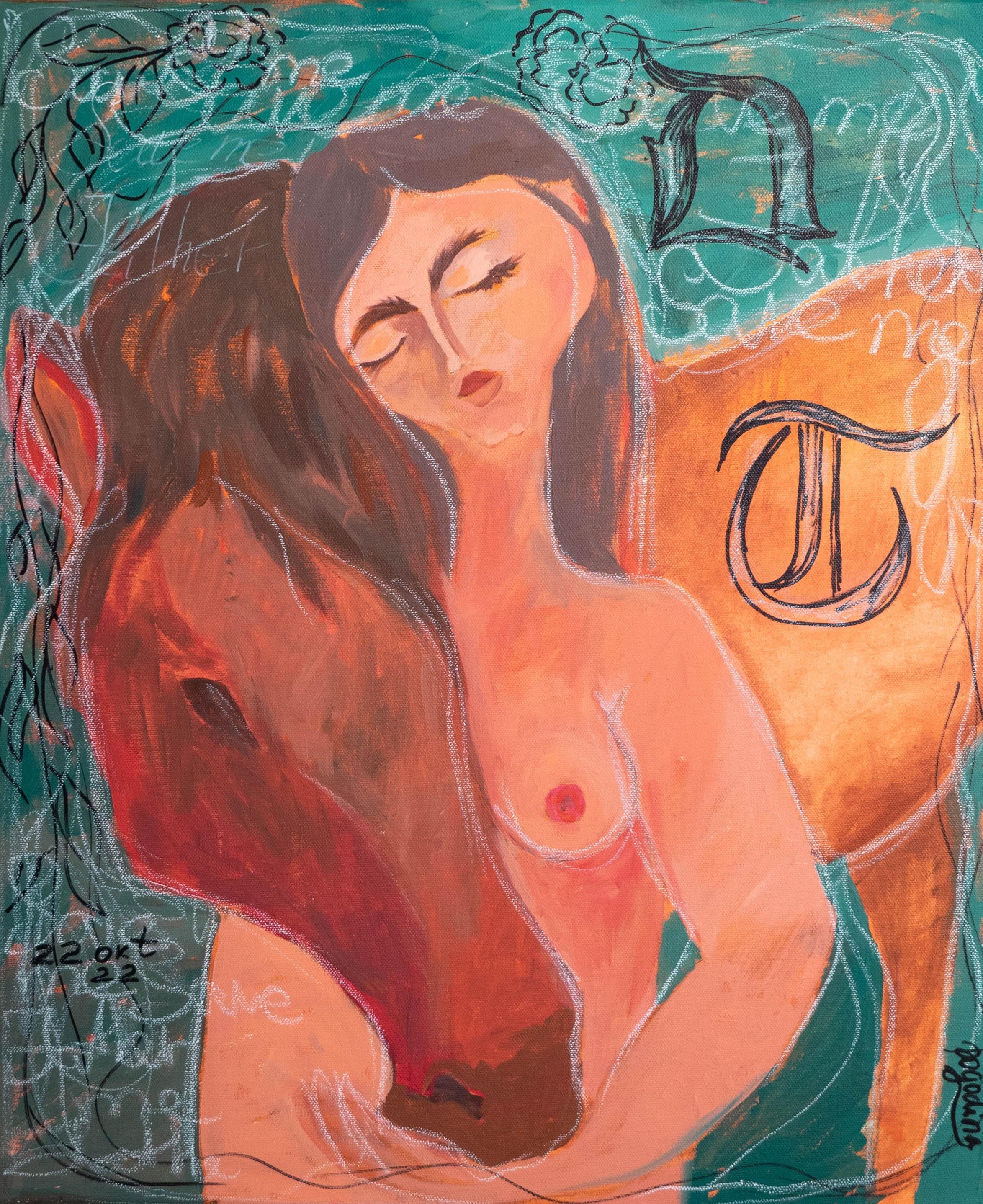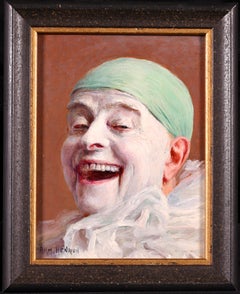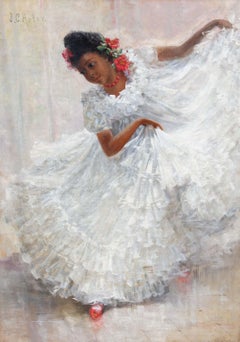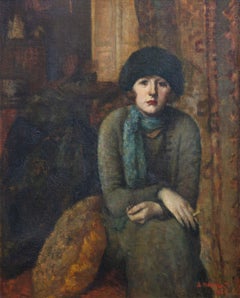
Arranging Flowers
View Similar Items
Want more images or videos?
Request additional images or videos from the seller
1 of 9
Geskel SalomanArranging Flowers1900
1900
About the Item
- Creator:Geskel Saloman (1821 - 1902, Swedish)
- Creation Year:1900
- Dimensions:Height: 19 in (48.26 cm)Width: 15 in (38.1 cm)
- Medium:
- Movement & Style:
- Period:
- Condition:Excellent condition - no holes, damage or repairs.
- Gallery Location:Marlow, GB
- Reference Number:1stDibs: LU41532839071
About the Seller
5.0
Platinum Seller
These expertly vetted sellers are 1stDibs' most experienced sellers and are rated highest by our customers.
Established in 2001
1stDibs seller since 2016
676 sales on 1stDibs
Typical response time: 2 hours
More From This SellerView All
- La Baigneuse - Impressionist Portrait Oil Painting by Constantin TerechkovitchBy Constantin TerechkovitchLocated in Marlow, BuckinghamshireSigned impressionist figurative oil on board circa 1940 by Russian painter Constantin Terechkovitch. The piece depicts a portrait of a lady in a dress and sun hat undressing in a wooded area beside a lake. The red of the dress contrasts beautifully against the deep blue of the water. Signature: Signed lower right Dimensions: Framed: 23.5"x15.5" Unframed: 18.5"x10.5" Provenance: Private French collection - Angers Konstantin Tereshkovich went to school in Moscow, where his family had moved in 1907. In 1917 he attended classes briefly at the Moscow School of Painting, Sculpture and Architecture. In 1920, after the revolution and civil war, during which he may have served as a Red soldier, he made his way to Paris, where, since his adolescence, he had always dreamed of being a painter in the city's vibrant artistic climate. To welcome him in Paris were Larionov (this was the time of the Ballets Russes) and Soutine, who were full of the experience of living along with Chagall, Modigliani and many others in La Ruche, the famous rotunda built for the Paris Exposition and later used for artists' studios. Making a living as best he could, Tereshkovich went to draw at the Académie de la Grande-Chaumière. He joined the Montparnasse circle of Kisling, Kremen and Lanskoy and later that of Roland Oudot, Maurice Brianchon and Raymond Legueult. Later they went on to form Réalité Poétique (Poetic Reality), a spontaneous group of painters that only became formalised in 1948. Tereshkovich joined the French Foreign Legion in 1939 but was demobilised in 1940. In 1944 he fled with his family to Avallon, where he had often painted. From 1950 he lived and worked in Menton, travelling, either in search of new subject matter or for pleasure, and once every four years went to the Olympic Games, to indulge his taste for sport. When Tereshkovich arrived in Paris he was overwhelmed by it, at first letting himself simply be carried away like a tourist, by shows like the French Can-Can, whose young dancers he painted both on stage and backstage; these paintings brought him some success. In 1933, he designed sets and costumes for the Ballets Russes de Monte Carlo. That year, he also married. His wife became his favourite model, and she was joined later by their two daughters, in countless family scenes that show his evident happiness down the years. He painted a wide variety of subjects, including Portrait of Frédéric Lefèvre, L'Espagnole, La Belle Danoise, and Avallon Town Crier, all of which were typical of his style. He also painted still-lifes and landscapes, such as Church near Avallon and Landscape at Villeneuve, and many horse racing scenes (he was a great racing enthusiast). In addition, he also produced many lithographs, some of which were illustrations for works by Colette or Chekhov, as well as designs for ceramics and tapestries. In his landscapes of the outskirts of Paris and the nearby countryside he would seize on a sudden intense ray of light piercing the mists on the Seine and turn it into something quite personal. During his travels, he went in search of ever more distant landscapes, both in France and beyond. Over the years, he also painted many portraits of his painter friends and others whom he met. Some of these portraits are entirely predictable, such as that of Bonnard, for whom he had nothing but admiration, but some of his other subjects are more surprising. These include: Soutine, Bonnard, Matisse, Utrillo, Vlaminck, Dunoyer de Segonzac, Rouault, Derain, Friesz, Van Dongen and Braque. Tereshkovich exhibited in various group exhibitions, including: from 1925 at the Salon d'Automne, Paris; in 1929, in Moscow, Tretyakov Gallery, along with Chagall, Soutine, Zadkine and Puni (the exhibition of Russian artists working in France). He went on to show work in many exhibitions around the world, such as: 1951, 1st Menton Biennale, where he won the Grand Prix; 1954 to 1958, 1963, the École de Paris exhibition at the Galerie Charpentier; regularly at the Salon des Peintres Témoins de leur Temps; 1972 Galerie des Granges, Geneva, Les Maîtres de la Réalité Poétique; and 2003, Musée de Montmartre, Paris, A Russian Summer in Montmartre: St Petersburg Artists in Paris in the Early 20th Century. He also showed work in solo exhibitions: 1927 Paris, Galerie Ch. Aug. Girard; 1934 Geneva, Musée de l'Athénée; 1937 Chicago, New York; 1938 Paris, Galerie de l'Élysée; 1942 Paris, Galerie Pétridès; 1946 Paris, Galerie Dubourg; 1948, 1951 Paris, Galerie Bernier; 1953 Paris, Galerie Pétridès, and Nice, Galerie Matarasso (watercolours and lithographs); 1957 Paris...Category
Mid-20th Century Impressionist Portrait Paintings
MaterialsOil, Board
- Dancer at the Opera - Impressionist Portrait Oil Painting by Norbert GoeneutteBy Norbert GoeneutteLocated in Marlow, BuckinghamshireSigned, titled and dated figurative oil on panel by French impressionist painter Norbert Goeneutte. The work depicts an elegant seated dancer getting dressed. She is wearing a dress with a black corset trimmed with yellow flowers around the bust and a white tuile skirt. A yellow flower contrasts against her dark hair. Signature: Signed upper right and titled and dated 1886 verso Dimensions: Framed: 9"x7" Unframed: 8"x6" Provenance: Private French collection Goeneutte studied under Pils and exhibited at the Salon from 1876 onwards. He was one of the organisers of the painter/engraver exhibitions ( Expositions des Peintres-Graveurs). His principal preoccupation lay in capturing scenes from everyday life in Paris, portraying its citizens and, above all, the women of the city. There is a discernible influence of Raffaëlli, although Goeneutte lacks the latter's expressive intensity. Examples of his work include Classroom, Boulevard de Clichy in the Snow, Arrival of the Wedding Party...Category
1880s Impressionist Portrait Paintings
MaterialsPanel, Oil
- Joyeux Pierrot - Impressionist Oil, Portrait by Armand Francois HenrionBy Armand (François Joseph) HenrionLocated in Marlow, BuckinghamshireSigned impressionist oil on panel portrait circa 1910 by French painter Armand Francois Henrion. The work depicts a happy, smiling Pierrot - a French clown - with his face painted white wearing white ruffles and a mint green hat. Signature: Signed lower right Dimensions: Framed: 9"x7.5" Unframed: 7"x5.5" Provenance: Private French collection Armand François Joseph Henrion...Category
1910s Impressionist Portrait Paintings
MaterialsOil, Panel
- Pierrot Surpris! - Impressionist Oil, Portrait by Armand Francois HenrionBy Armand (François Joseph) HenrionLocated in Marlow, BuckinghamshireSigned impressionist oil on panel circa 1910 by French painter Armand Francois Henrion. This charming work depicts a portrait of a surprised Pierrot - a French clown - with a white powdered face wearing white ruffles and a pink hat. The pierrot is set against a brown background. Signature: Signed lower right Dimensions: Unframed: 7"x5.5" This painting is not currently framed but a suitable frame can be sourced if required Provenance: Private French collection Armand François Joseph Henrion...Category
1910s Impressionist Portrait Paintings
MaterialsOil, Panel
- Pierrot et Monocole - Impressionist Oil, Portrait by Armand Francois HenrionBy Armand (François Joseph) HenrionLocated in Marlow, BuckinghamshireWonderful signed impressionist oil on panel circa 1910 by French painter Armand Francois Henrion. The work depicts a portrait of a mischievous Pierrot - a French clown - wearing white ruffles, a yellow hat and a monocle. The yellow of the hat is contrasted against the grey background. Signature: Signed lower right Dimensions: Unframed: 11"x8.5" This painting is nit currently framed but a suitable frame can be sourced if required Provenance: Private French collection Armand François Joseph Henrion...Category
1910s Impressionist Portrait Paintings
MaterialsOil, Panel
- Danseuses a la barre - Impressionist Figurative Pastel - Pierre Carrier-BelleuseBy Pierre Carrier-BelleuseLocated in Marlow, BuckinghamshireSigned figurative pastel on canvas circa 1910 by French genre painter Pierre Carrier-Belleuse. The work depicts three ballerinas wearing white tutus, warming up in a studio. Carrier-Belleuse was a contemporary of Edgar Degas and they exhibited simultaneously at the major Salons in Paris. This classic example evokes the Belle Epoque period in french history and is superbly executed. Signature: Signed lower right Dimensions: Framed: 29"x24" Unframed: 26"x21" Provenance: Private French collection Pierre Carrier-Belleuse studied at the École des Beaux-Arts in Paris under Alexandre Cabanel and the interior decorative artist Pierre Victor Galland. He started out as an oil painter and produced genre compositions, such as his Final Rendezvous. From 1885, however, he opted to work exclusively in pastel, producing a large number of sketches and portraits but always remaining faithful to his earlier genre compositions. Examples include Pierrot, Harlequin, Woman with Cat. The periodical Figaro Illustré published a large number of his sketches of dancers, a recurrent theme throughout his work. From 1875, Pierre Carrier-Belleuse exhibited frequently at the Paris Salon, receiving an honourable mention in 1887 and being awarded a silver medal at the Exposition Universelle of 1889. Museum and Gallery Holdings: Dunkirk: Dancer Adjusting her Shoe (pastel) Gray: On the Dunes; In the Sun La Rochelle: Dancer Le Puy-en-Velay: Fantasy Mulhouse: Mule's Bonnet Paris (Municipal Collection): Tender Vow (pastel) Versailles...Category
1910s Impressionist Figurative Paintings
MaterialsCanvas, Pastel
You May Also LikeView All
- "The Pensive Beauty, " Carl Nordell, American Impressionism, Female PortraitBy Carl NordellLocated in New York, NYCarl Nordell (1885 - 1957) The Pensive Beauty Oil on canvas 40 x 32 inches Signed lower left Nordell was born in Copenhagen on 23 September 1885. In 1892 the Nordell family settled in Westerly, New Jersey, where Carl Johan, one of several children, received his education. Reportedly, a local gambler and art collector, Richard Canfield was so impressed with young Nordell's talent that he assisted him to gain admittance to the Rhode Island School of Design. Carl was a tireless student and serious in his studies of art, literature, and philosophy. Friends nicknamed him "The American Frans Hals," as a result of his study of that Dutch master. After graduating from the school in 1905, Nordell continued his training at the Art Students League in New York City for the following two years. There he received criticism and instruction from George Bridgman (1864-1943), a noted teacher of anatomy, and Frank Vincent DuMond (1865-1951), a landscapist associated with Old Lyme. The popularity of Impressionism in America at this time had reached its peak, and the style was of paramount influence in Nordell's advanced studies. Around 1906, Nordell visited an exhibition of paintings by the Ten, most of whom were American Impressionists. Moved by the work of Tarbell and Joseph R. De Camp, he sought instruction from them at the School of the Museum of Fine Arts, Boston. Nordell worked diligently under Tarbell and experimented with the genre of women in interiors, or Intimism. In 1909, Nordell received the Paige Traveling Scholarship, which provided for two years of continued study in Europe. He became one of the hundreds of Americans to receive criticism from Jean-Paul Laurens at the Académie Julian in Paris. From this base, he made study trips to visit major museums and galleries in Italy, Holland, Spain and Germany and during this period Nordell's style reached a level of uniqueness, though he definitely remained under the general influence of French Impressionism. By the time of his return to Boston in 1911, Nordell had successfully incorporated the use of broken color, a high-keyed palette, and the practice of working en plein air to achieve an accurate representation of light and atmosphere. In October of that year, the Boston Art Club presented eighty-seven of Nordell's watercolors and oils to the viewing public. Some of the watercolors seem revolutionary in their spontaneity. Nordell continued his career in Boston at Fenway Studios and exhibited in national competitions, including the annuals of the National Academy of Design, the Art Institute of Chicago; at the 1912 biennial of the Corcoran Gallery he won the fourth Clarke Prize. Nordell's finances were augmented by portrait commissions of some of Boston's affluent citizens. The artist was so intent on recording the sitter's likeness that in this genre, he deviated from his usual impressionist technique. In the women-in-interior genre, he frequently depicted a fully draped woman seated in profile or at an oblique angle to the picture plane. These pensive and attractive young ladies usually gaze into space and become an integral part of the pleasant ambiance of the scene. In this way, Nordell remained within the Genteel Tradition as it was manifest in Boston. The artist exhibited several such works in the Panama-Pacific International Exposition in San Francisco in 1915, and won a silver medal for his efforts. In 1918, a one-man exhibition of fifty works was presented at the Boston Art Club. Nordell remained active in the Boston area art clubs and societies through the early 1920s. In the winter of 1921 Babcock Art Galleries presented him with yet another one-man show. During this period, Nordell increased the production of prints and won the Salmagundi Club's Shaw Prize for etching in 1923. Sometime after 1927 he began taking summer sketching trips to Chautauqua Lake...Category
Early 20th Century American Impressionist Figurative Paintings
MaterialsCanvas, Oil
- Impressionist Painting of a Young Spanish Flamenco Dancer by J.C. ArterBy John Charles ArterLocated in Rochester, NYWonderful impressionist painting. Full of light, color, and movement. "The Flamenco Dancer by J. Charles Arter ( American 1860-1923). Oil on canvas. Signed upper left. Circa 1900. Unframed. Born in Hanoverton, Ohio, Charles Arter studied in Cincinnati and Paris at the Academie Julian. He had studios in Venice, London and New York and painted portraits of many famous personages including Pope Pius X...Category
Early 20th Century Impressionist Figurative Paintings
MaterialsOil, Canvas
- Impressionist Painting of a Bohemian Woman Budapest 1925 Bertha De HellebranthLocated in Rochester, NYBohemian woman Budapest, Hungary 1925 by Bertha De Hellebranth. Fabulous period painting brings to life the bohemian intelligentsia of Europe in the 1920's. I believe the painting is of the artists sister Elena Maria De Hellebranth. Both sisters were accomplished artist and worked and exhibited together. See the photo of the sisters Elena on the left and Bertha on the right. Oil on canvas. In a period frame. Signed lower right. Inscribed on reverse. Provenance: label from Newman Galleries Philadelphia. BIOGRAPHY ; Bertha de Hellebranth and her sister Elena were born into a cultured upper-class family in Budapest, Bertha in 1899, Elena in 1897. Their father was a lawyer and their mother a student of Franz Liszt's last living pupil. Both sisters showed artistic potential early, beginning to paint at four or five years of age. Their parents encouraged them, and had the means to send them to the best art schools of the time. They studied at the Academy of Fine Art in Budapest, at the Académie Julian and the Académie de la Grande Chaumière in Paris, and painted portraits of European nobility. As Patricia Fazekas points out, "Growing up in a family of privilege, they seemed to have unusual access to many illustrious people." So we should not be surprised to find among their subjects members of high society, such as Count Andrássy Gyula, the Russian-born Princess Baby Galitzine, and Admiral Horthy Miklós, the Regent. Later on, their subjects included American heiress Gladys Vanderbilt (Countess László Széchenyi), President Theodore Roosevelt's granddaughter Paulina Longworth and former President Dwight D. Eisenhower.Often, the sisters would paint the same subject at the same time, offering the sitter a choice of portraits. Most often, the sitter wanted both renditions.While Elena concentrated on working in oil and watercolor, Bertha used gouache and oil to achieve her effects. Elena gave lectures and workshops, was a writer and also wrote popular and ecclesiastical music, while Bertha also went in for sculpture and handicrafts.From the mid-thirties until World War II, Bertha and Elena divided their time between their home in Budapest and a home on the ocean at Ventnor, NJ. In 1925, they showed their work at the Nemzeti Szalon in Budapest, and in 1926, they had a joint exhibition of their portraits in the US. Both exhibited their work at the Art Institute of Chicago, the Brooklyn Museum of Art, the Pennsylvania Academy of Fine Arts and most major museums and galleries in the US. Bertha also had exhibits at the Metropolitan Museum of Art. Both Bertha and Elena were Fellows of the Royal Society of Art (London), and garnered numerous prizes. Bertha was awarded First Prize by the National Academy of the American Water Color Society one year, and the Grand Prize of the Audubon Society. She was one of the founders of the now defunct World League of Hungarian Artists Abroad (Külföldi Magyar Képz?m?vészek Világszövetsége), and received a Gold Medal from the Cleveland Árpád Akadémia in 1963. (Elena also received the Akadémia's gold medal in 1965.) Their work is found in museums and galleries too numerous to mention.The de Hellebranth sisters were devout Catholics, and this is evident in their many portraits of clerics...Category
Early 20th Century Impressionist Figurative Paintings
MaterialsCanvas, Fabric, Oil
- Fine 1900's French Belle Epoque Period Portrait of a Lady, signed & dated oilBy French Belle EpoqueLocated in Cirencester, GloucestershireThe Belle Epoque Lady French School, signed and dated 1907 oil painting on canvas: 24 x 19.5 inches antique original gilt frame: 29 x 24 inches condition:...Category
Early 1900s Impressionist Figurative Paintings
MaterialsOil, Canvas
- Bill Bate, Reflections, Original Figurative Painting, Nude Artwork, Water ArtBy Bill BateLocated in Deddington, GBReflections by Bill Bate [2022] original Oil on Canvas Image size: H:122 cm x W:92 cm Complete Size of Unframed Work: H:122 cm x W:92 cm x D:3cm Sold Unframed Please note that insit...Category
21st Century and Contemporary Impressionist Figurative Paintings
MaterialsCanvas, Oil
- Mid 20th Century French Impressionist Oil Painting Portrait Elderly Man BeardLocated in Cirencester, GloucestershirePortrait of a Man French School, mid 20th century inscribed verso oil painting on canvas, unframed painting: 11 x 7.5 inches condition: overall very goodCategory
Mid-20th Century Impressionist Portrait Paintings
MaterialsOil, Canvas
Recently Viewed
View AllMore Ways To Browse
Vasa Painting
Jamaican Artist
Large Mythological Painting
Nude Daughter
Nude Interior Scene
Oil Painting Woman 1930s
Tony Brown Art
Gallery Victor Armendariz
Hyper Realistic Paintings
John Silver Oil
Late 19th Century Spanish Painting
Paris Cafe Scene Painting
After Oil Huge
Bay Area Figurative School
Indian Army
Meditation Figure
Middle Eastern Frame
Reading Man Painting
